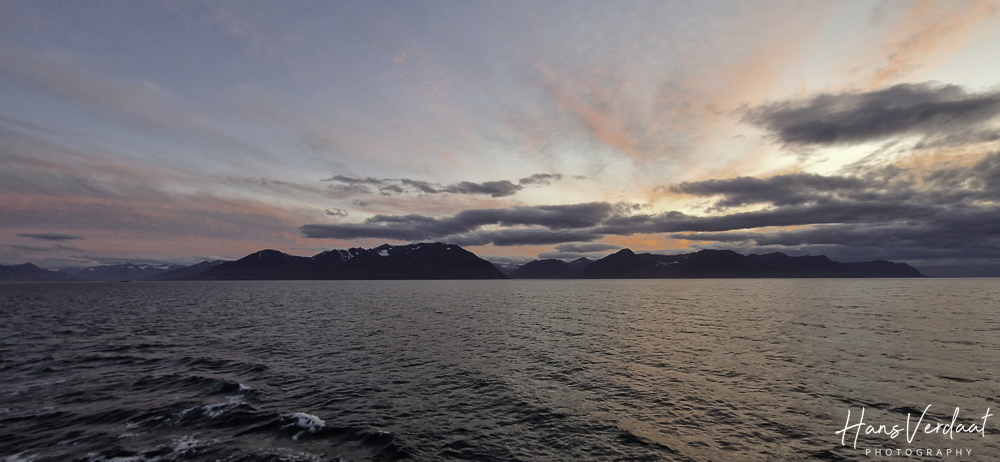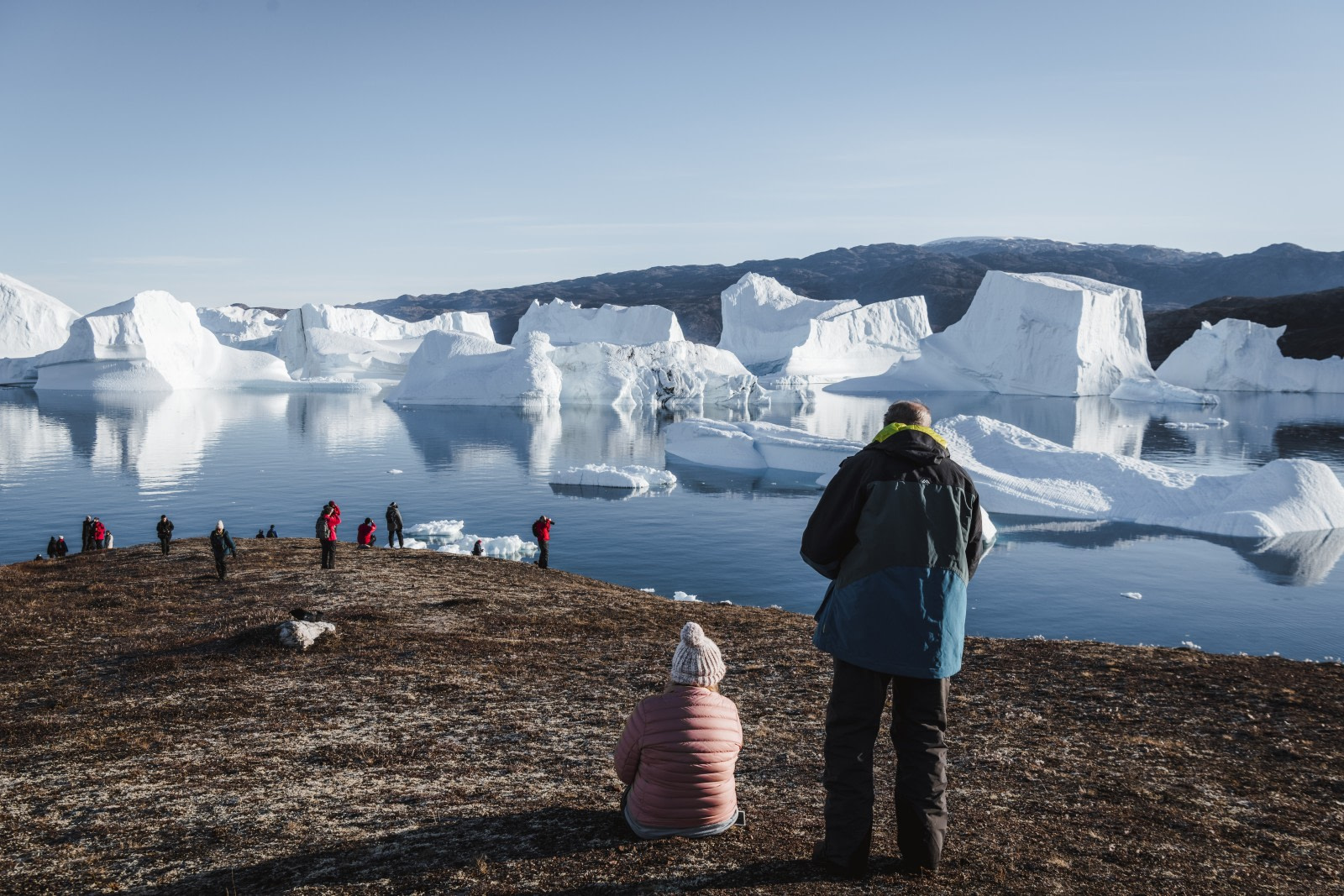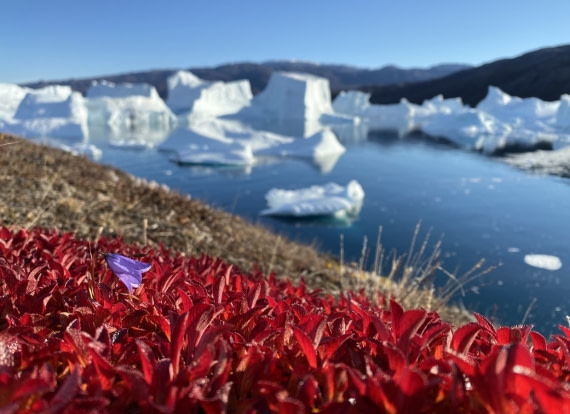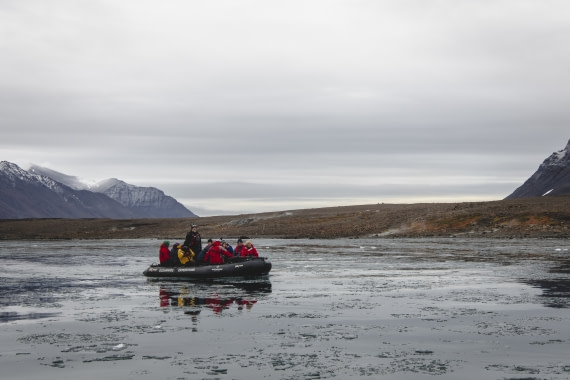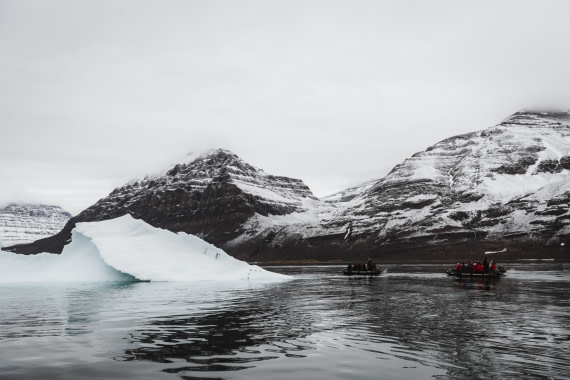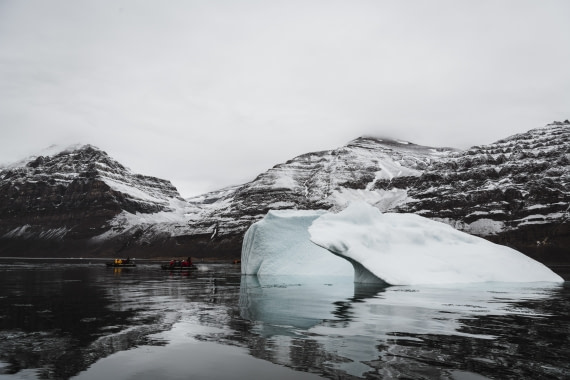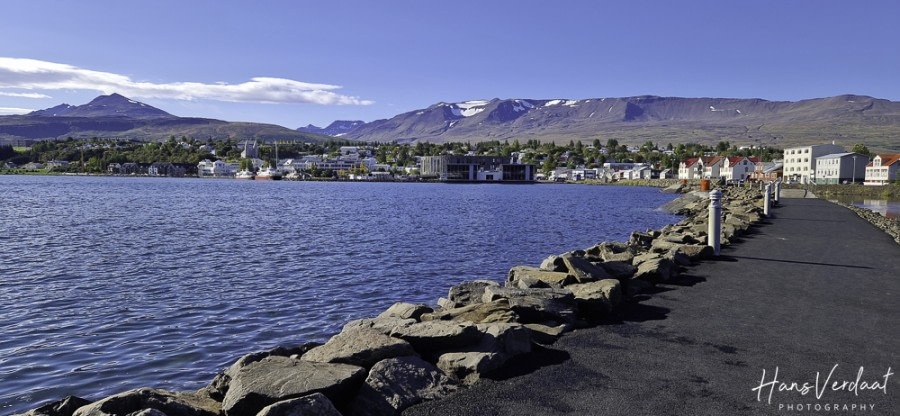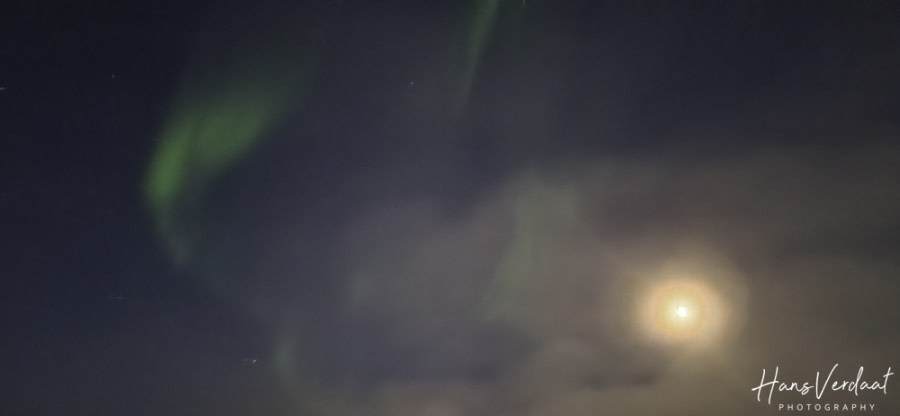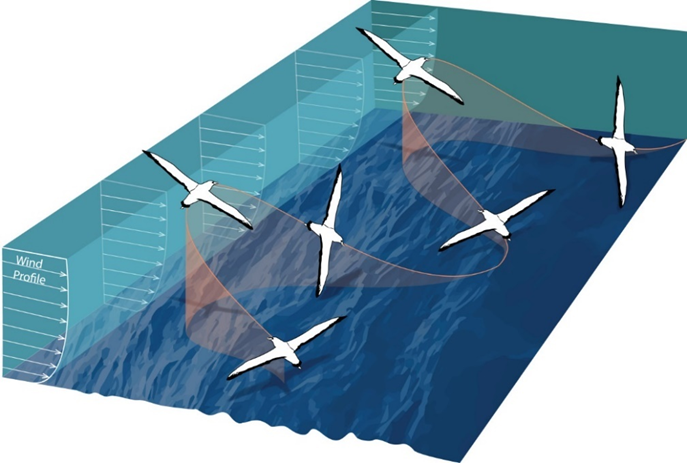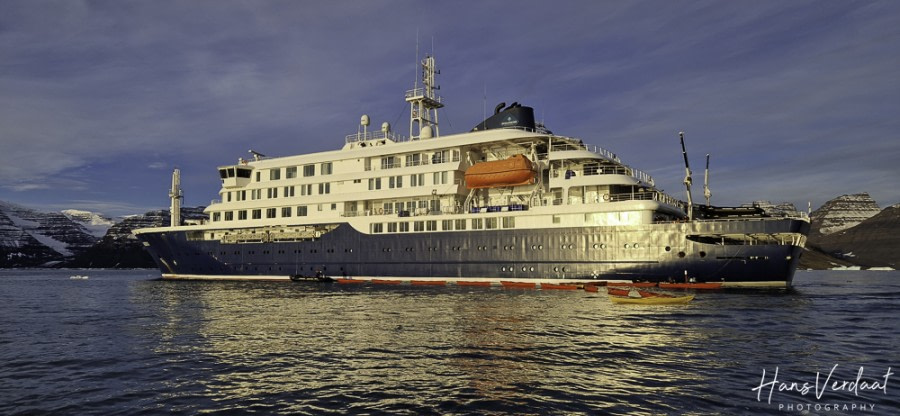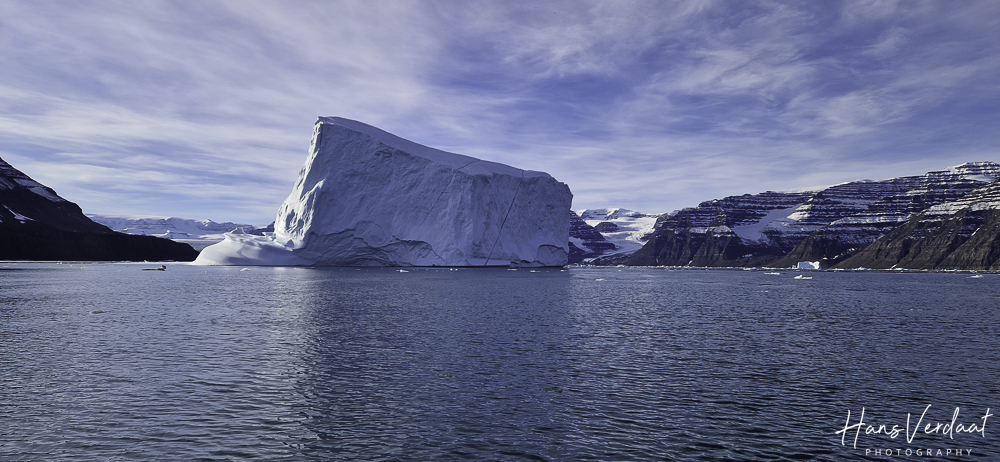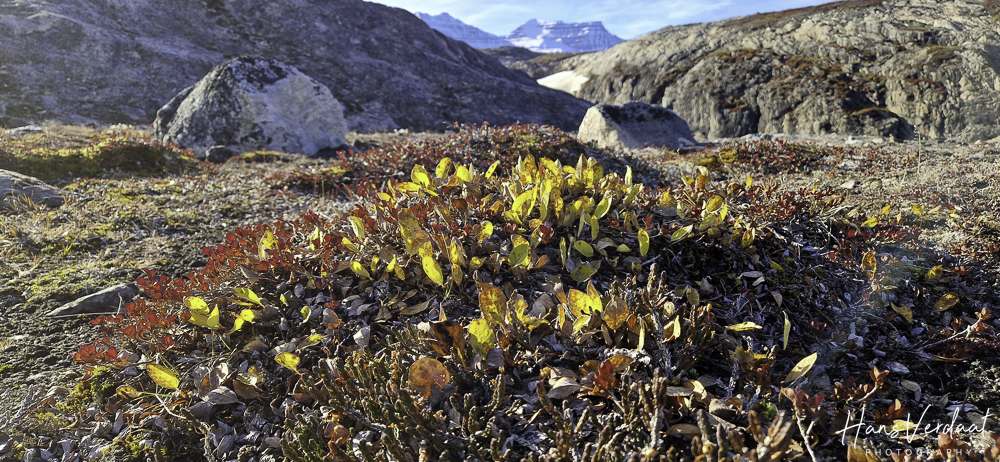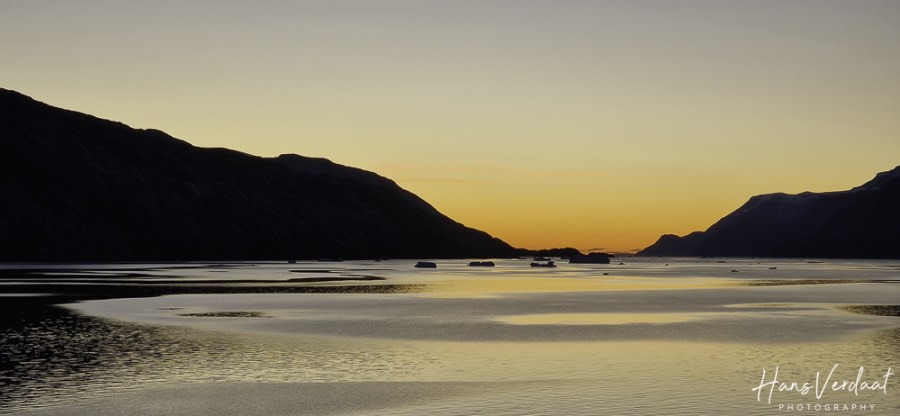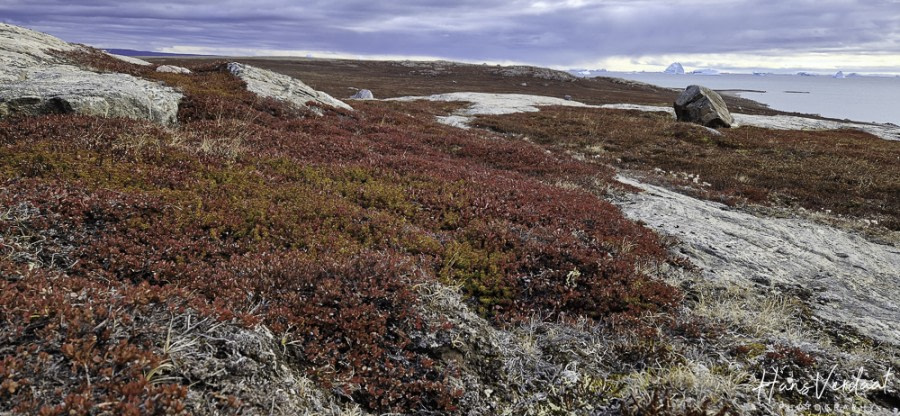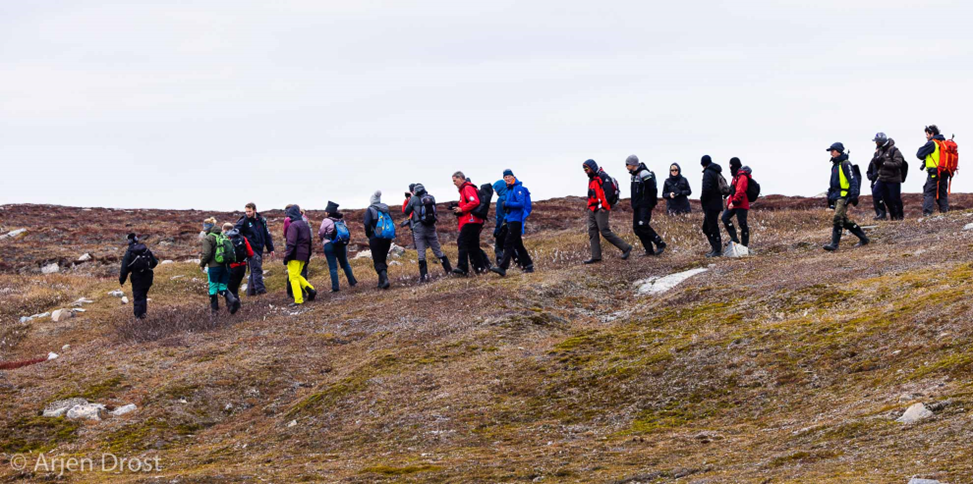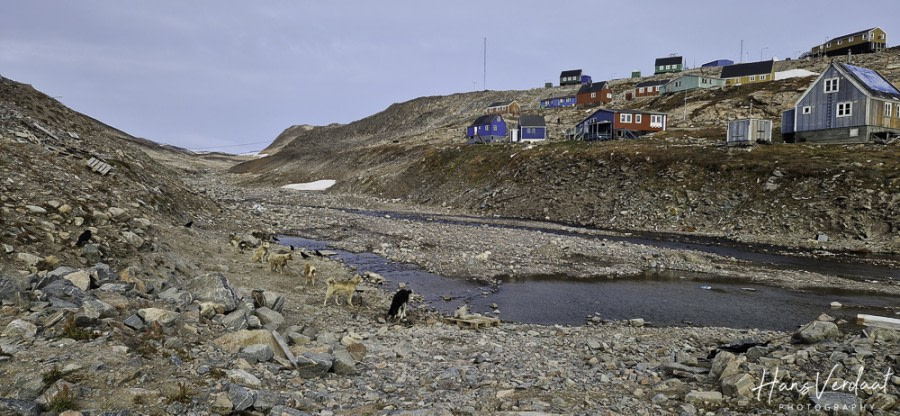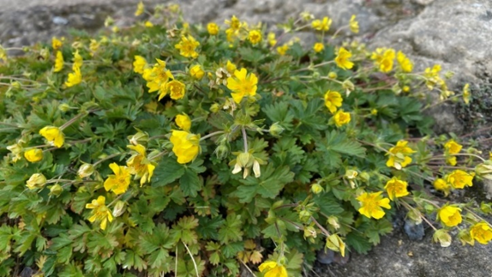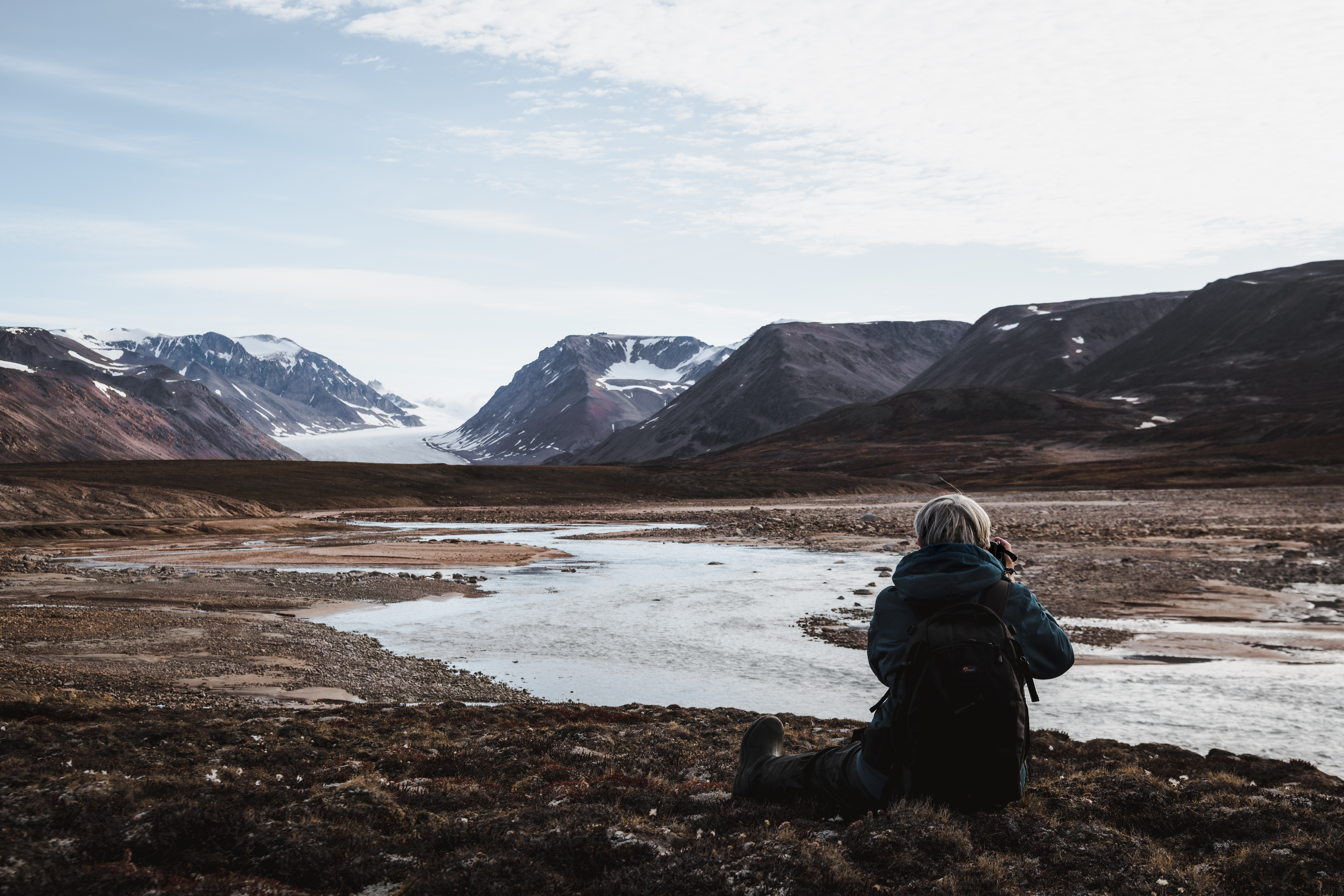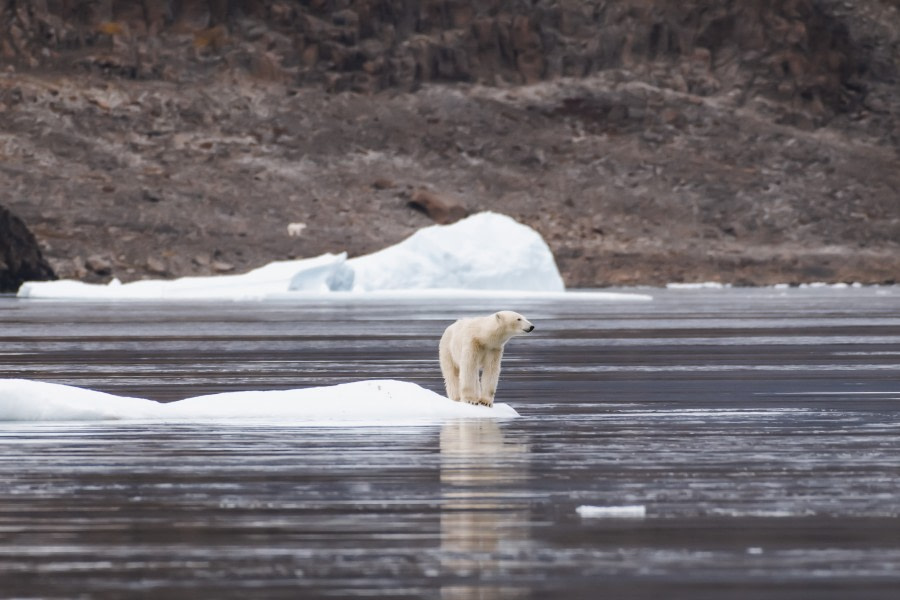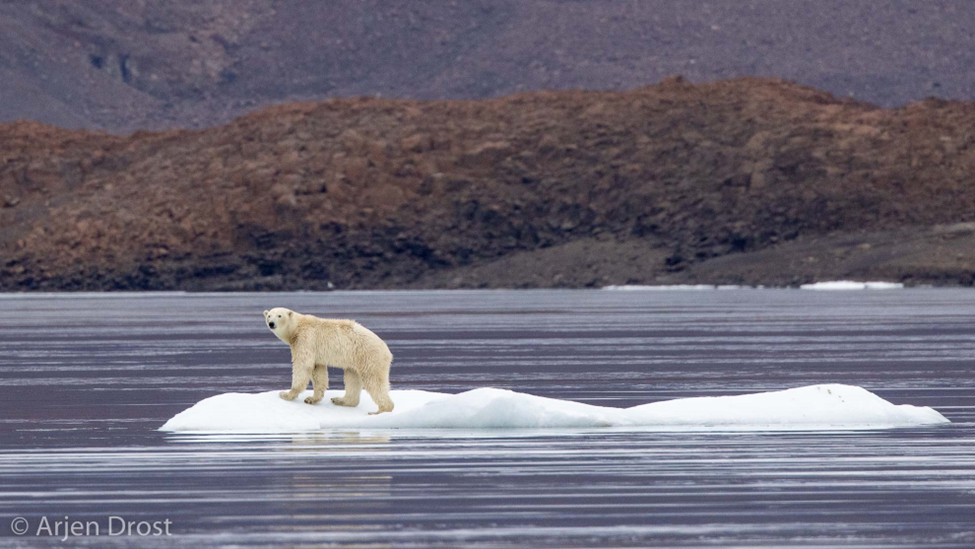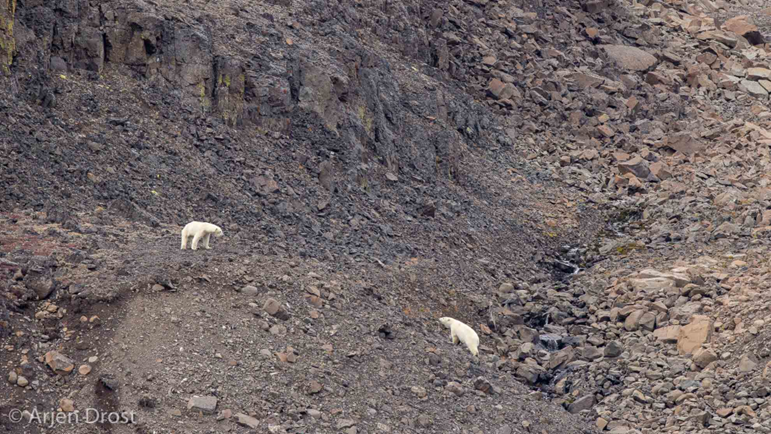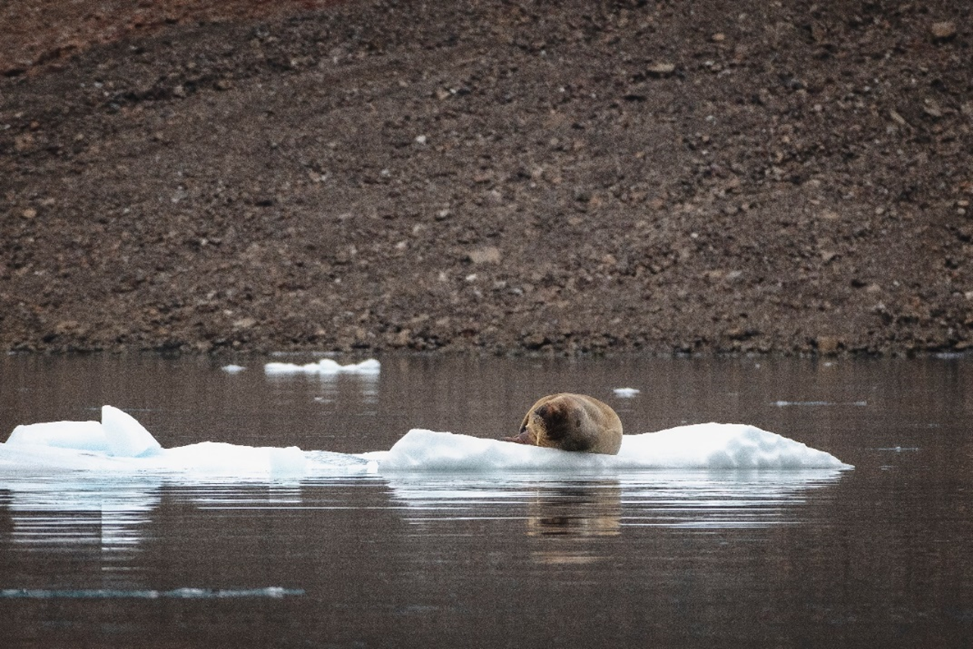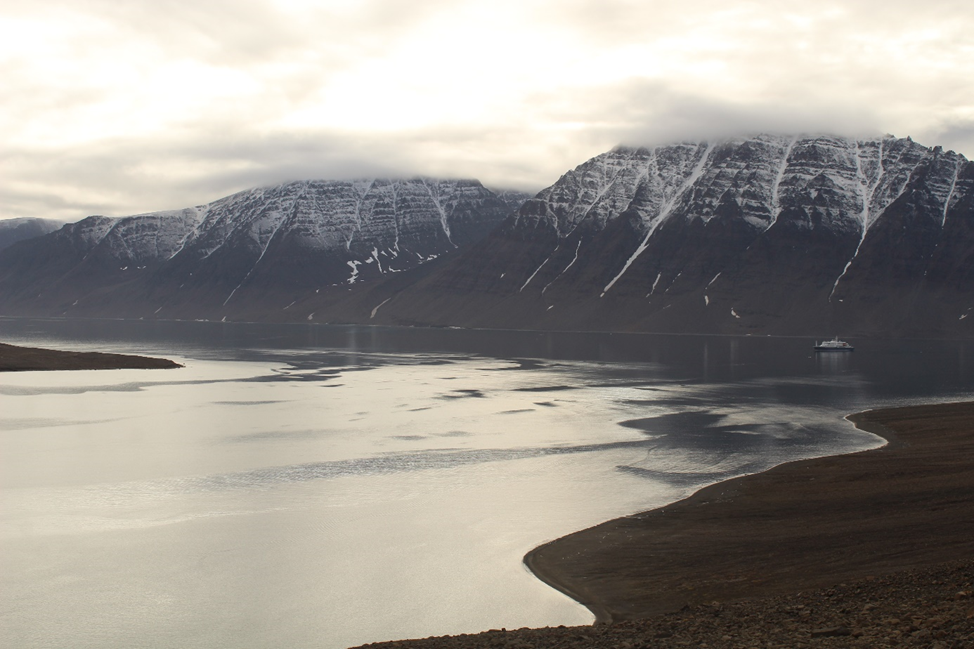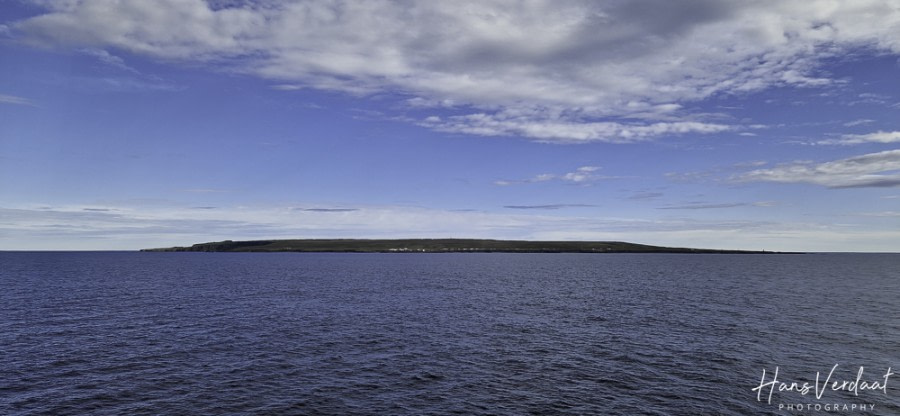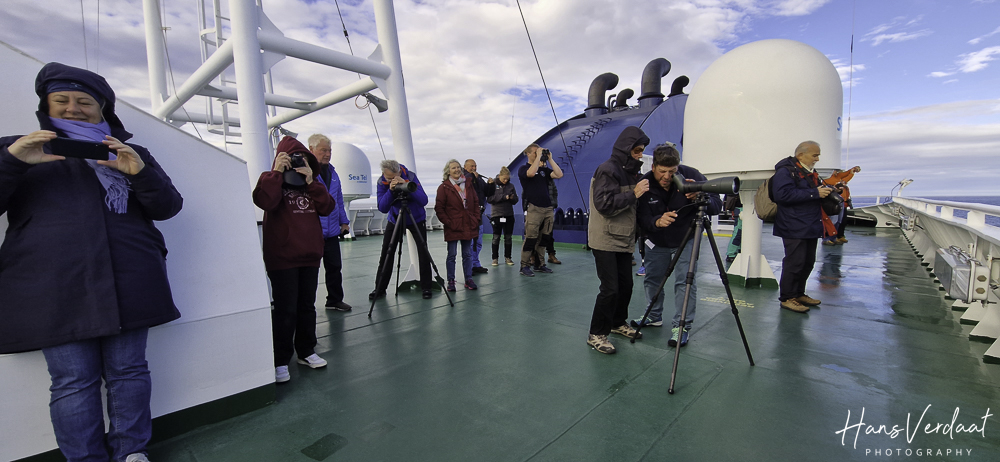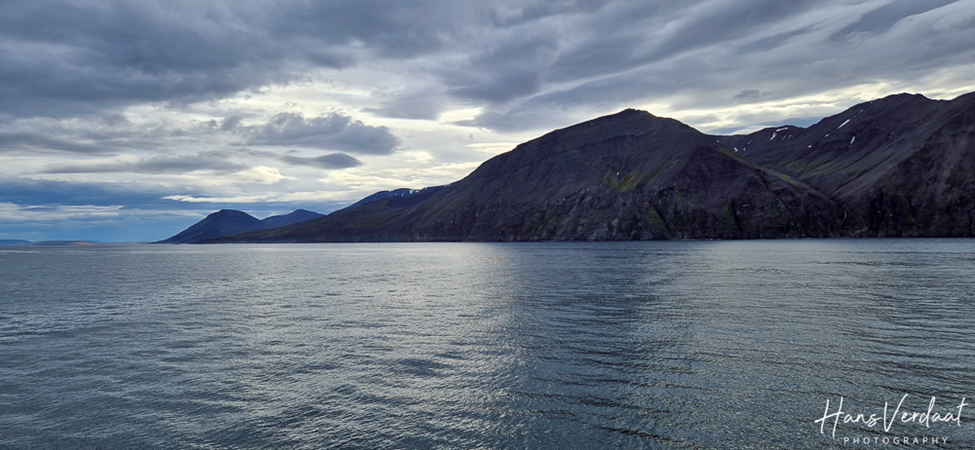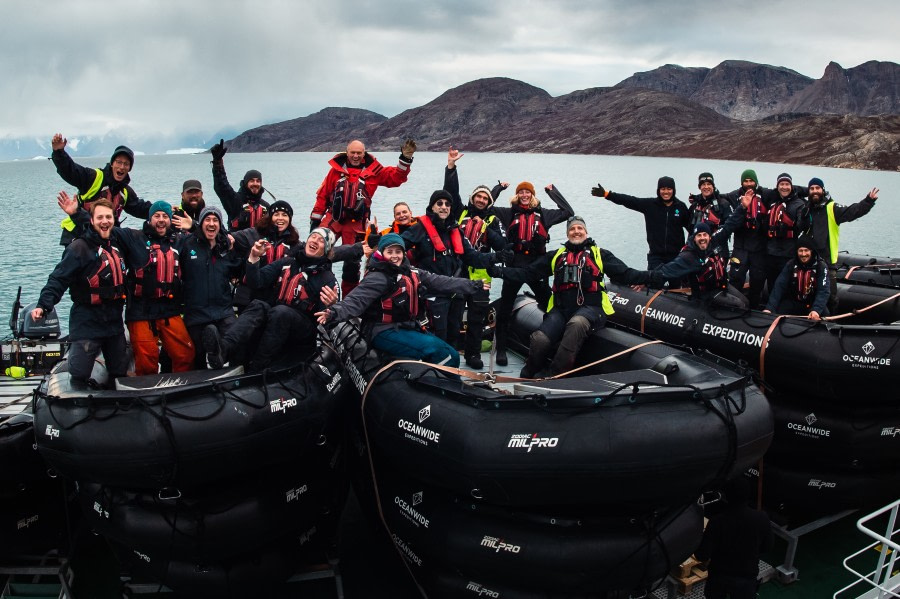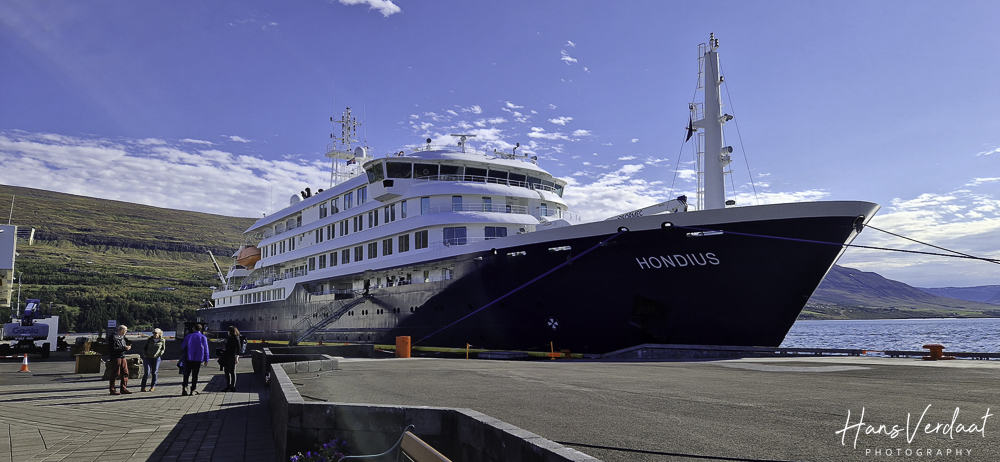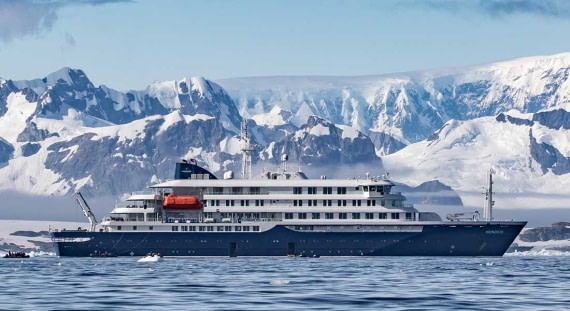| Date: |
15.09.2022 |
| Position: |
70°27.7’ N 028°08.5’ W |
| Wind: |
Variable |
| Weather: |
Clear |
| Air Temperature: |
+4 |
In the early morning, we woke up early for a chance at seeing Narwhals in their natural environment. Sadly, the Narwhals have not been seen, but instead, we got a smashing sunrise as recompense, heaving its shiny globe out of the horizon perfectly in between the mountain ranges, bathing the surrounding mountains in beautiful pastel colours ranging from pink to pale blue. After a subsequently lovely breakfast, we prepared ourselves for a split activity: landing on Rode Ø and a zodiac cruise between the vast icebergs, stranded in their graveyard. The icebergs could be seen beautifully from a viewing point on land, where people sat and just indulged in the sights, taking in incomprehensibly huge blocks of ice.
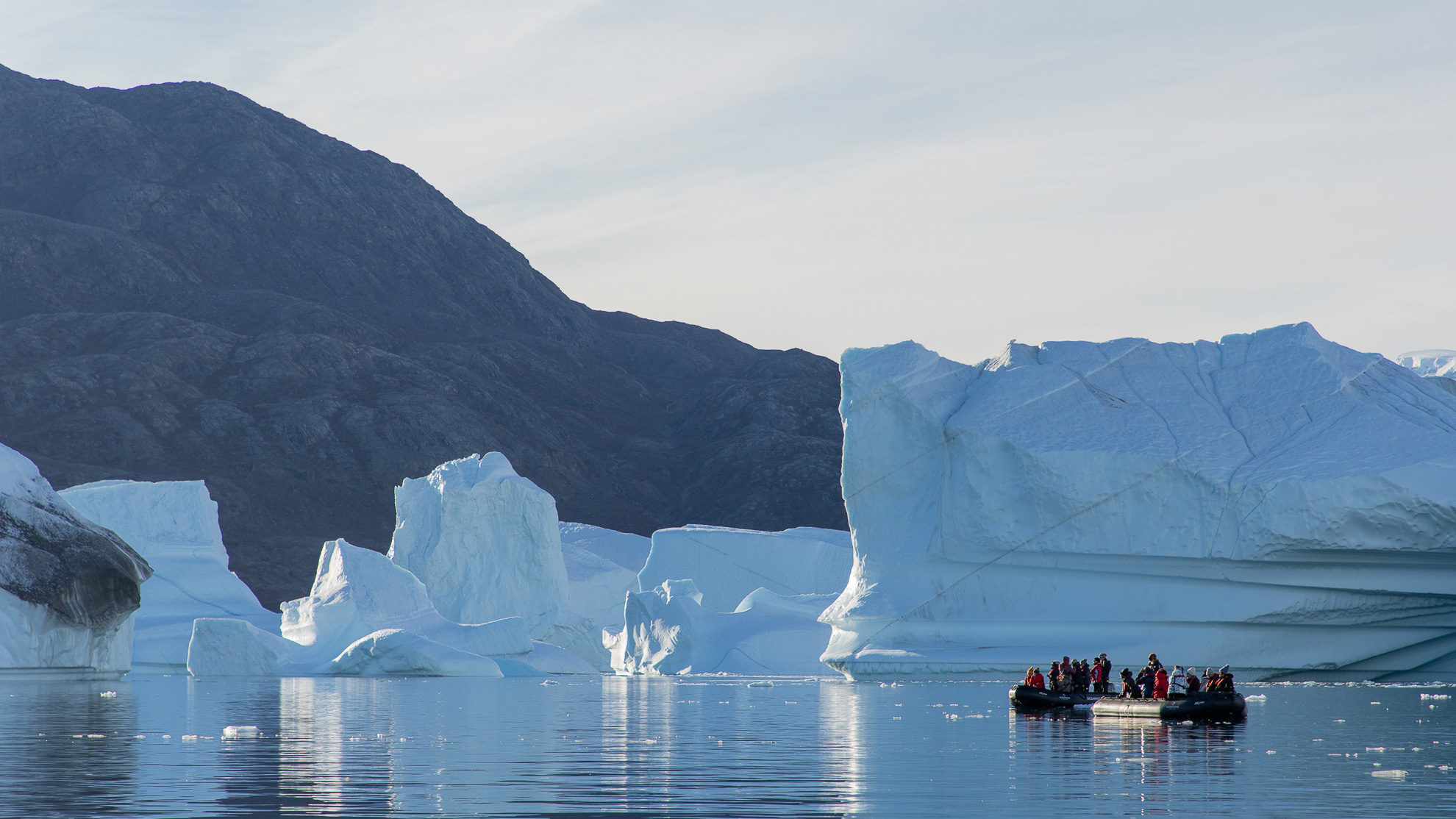
After a subsequently lovely breakfast, we prepared ourselves for a split activity: landing on Rode Ø and a zodiac cruise between the vast icebergs, stranded in their graveyard. The icebergs could be seen beautifully from a viewing point on land, where people sat and just indulged in the sights, taking in incomprehensibly huge blocks of ice.
The zodiac cruise allowed us to come much closer to these giants, observing them from different angles, in which they adopted different forms. Seals were swimming in the water, as we cruised in our tiny zodiacs between masses of solid water reaching over 30 meters in height, meaning that many hundreds of meters lay below the surface. It is hard for the mind to comprehend such a sight, and we could but gaze upwards and be amazed.
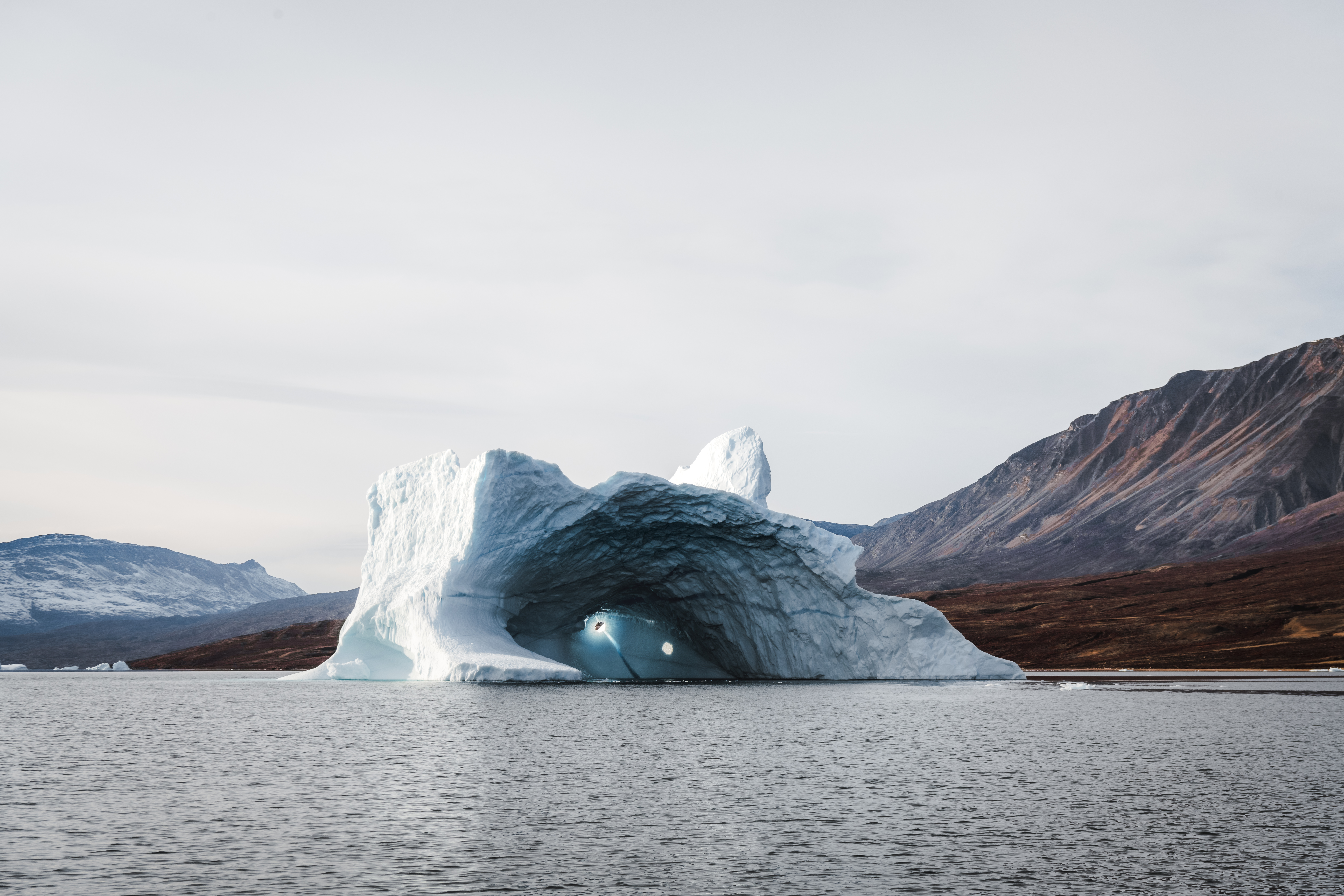
After this truly delightful morning and a lunch containing yet again too much food, we set off in Rode Fjord on our second zodiac cruise of the day in search of musk ox, which we haven’t yet seen on this trip. We spotted some from the Hondius, and as we approached the shorelines, a group of them was waiting right by the water. They did not seem too alarmed, so we slowly made our way closer in a snake formation. On the way, we spotted an enormous iceberg, with an almost hollow entrance, containing but a small window through which line shone through, reminiscent of the cupola in Rome.
We came closer to the musk ox and could finally see their furry brilliance for ourselves. They were contently grazing away, in a relatively barren landscape, yet still colourful through the combination of dwarf birch, arctic willow and bearberries. We spent some time with the musk ox and continued our cruise along the shorelines.
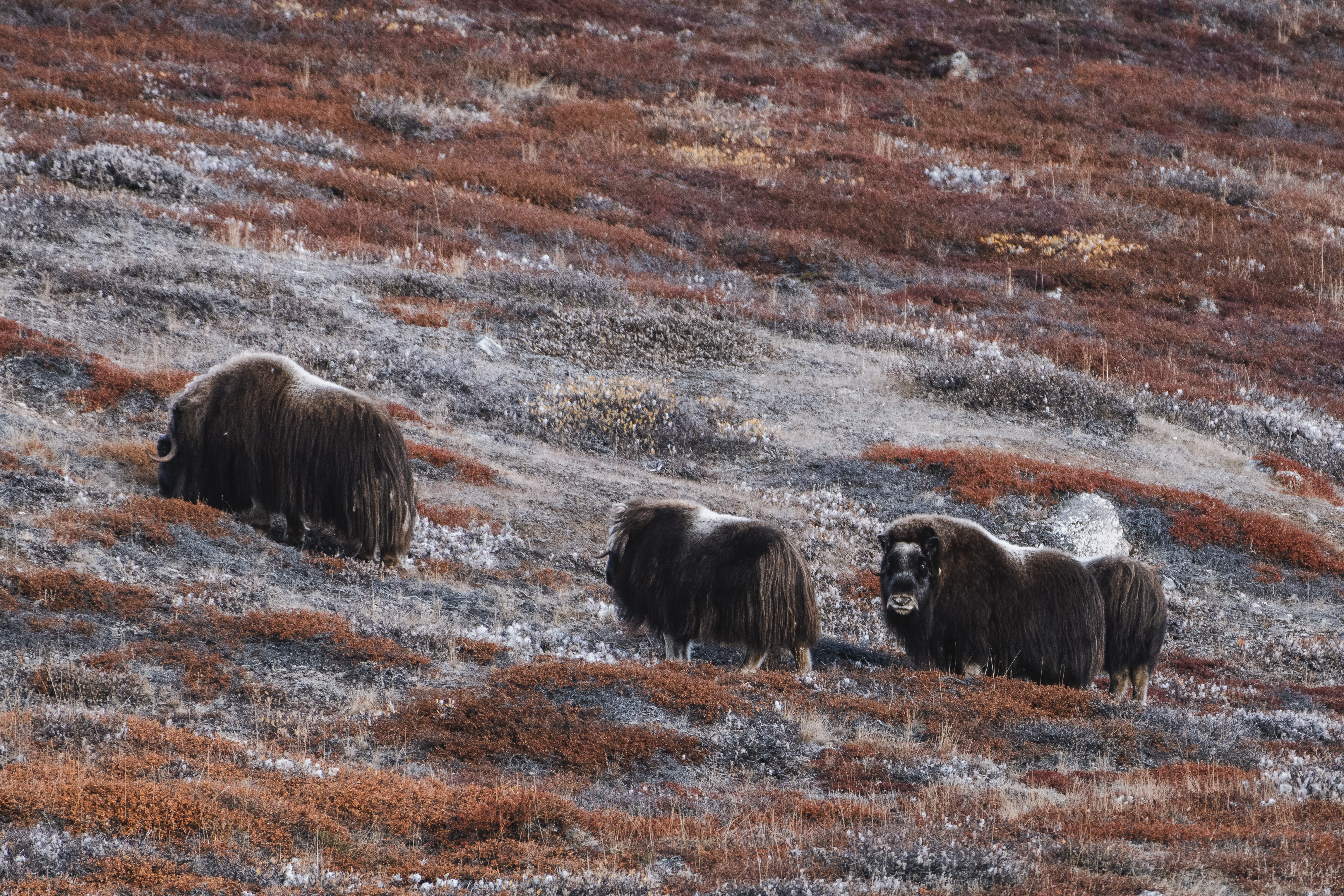
Sadly, we found an abandoned musk ox calf, injured and laying by the beachside. This is however but another part of the natural process for many animals, and it will surely serve as subsistence for a family of polar bears or foxes, continuing their line that way.
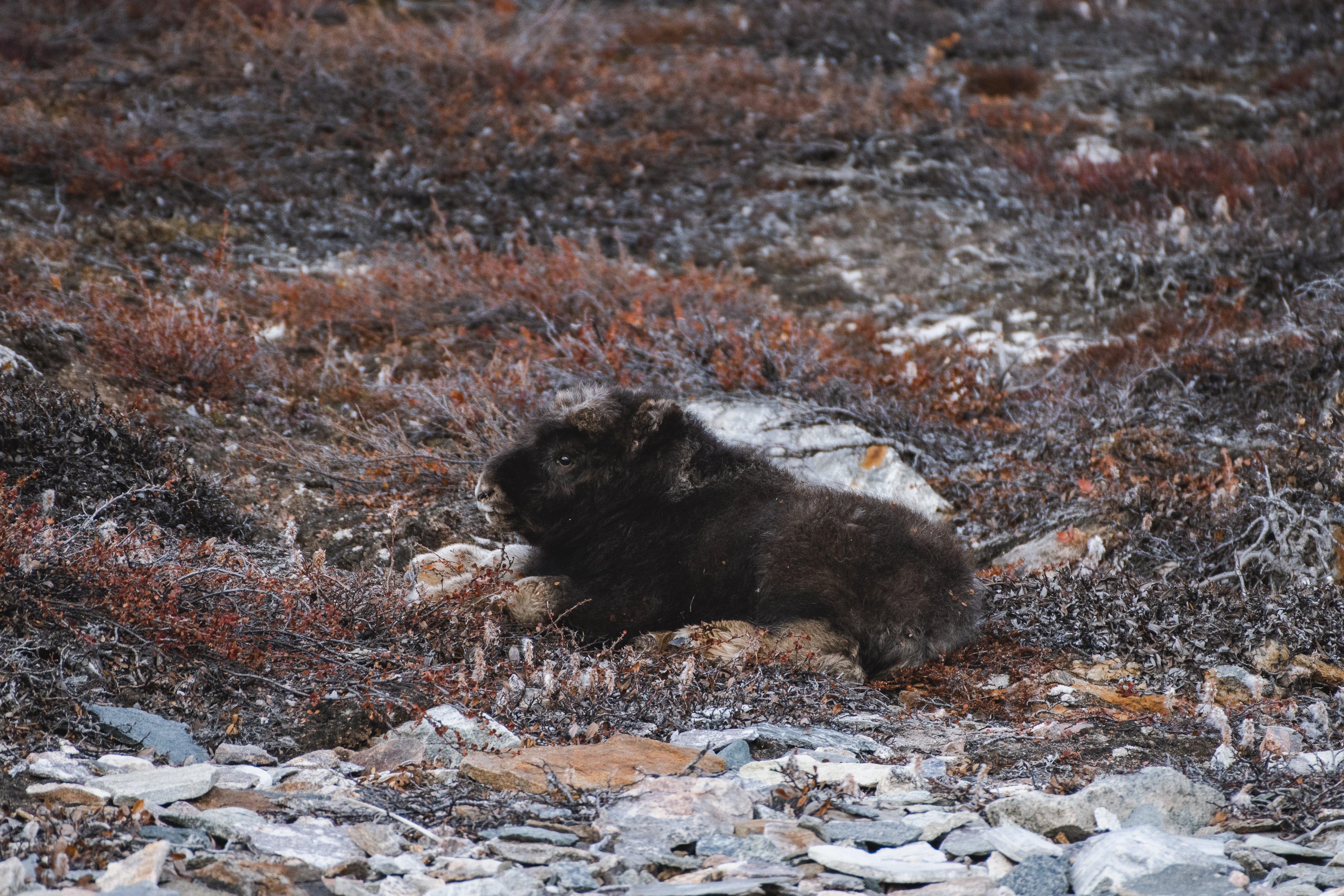
In the evening, the game was on, as it was BBQ night! Lots of grilled food and free drinks were enjoyed on the outside of deck 5 amidst lovely weather and light, and once the food was consumed, the tables were moved, and the open area served as the dancefloor until midnight. Sweaty, full, tired, but extremely happy with the day’s events, we finished the day, and were looking forward to what else awaited us in the continuing voyage.
To finish off, here is a limerick:
We cruise through blocks of ice,
Rising high above us to the skies,
Suddenly the iceberg starts turning,
And ice blocks are hurling,
As we see our imminent demise.
Mikhail Barabanov
